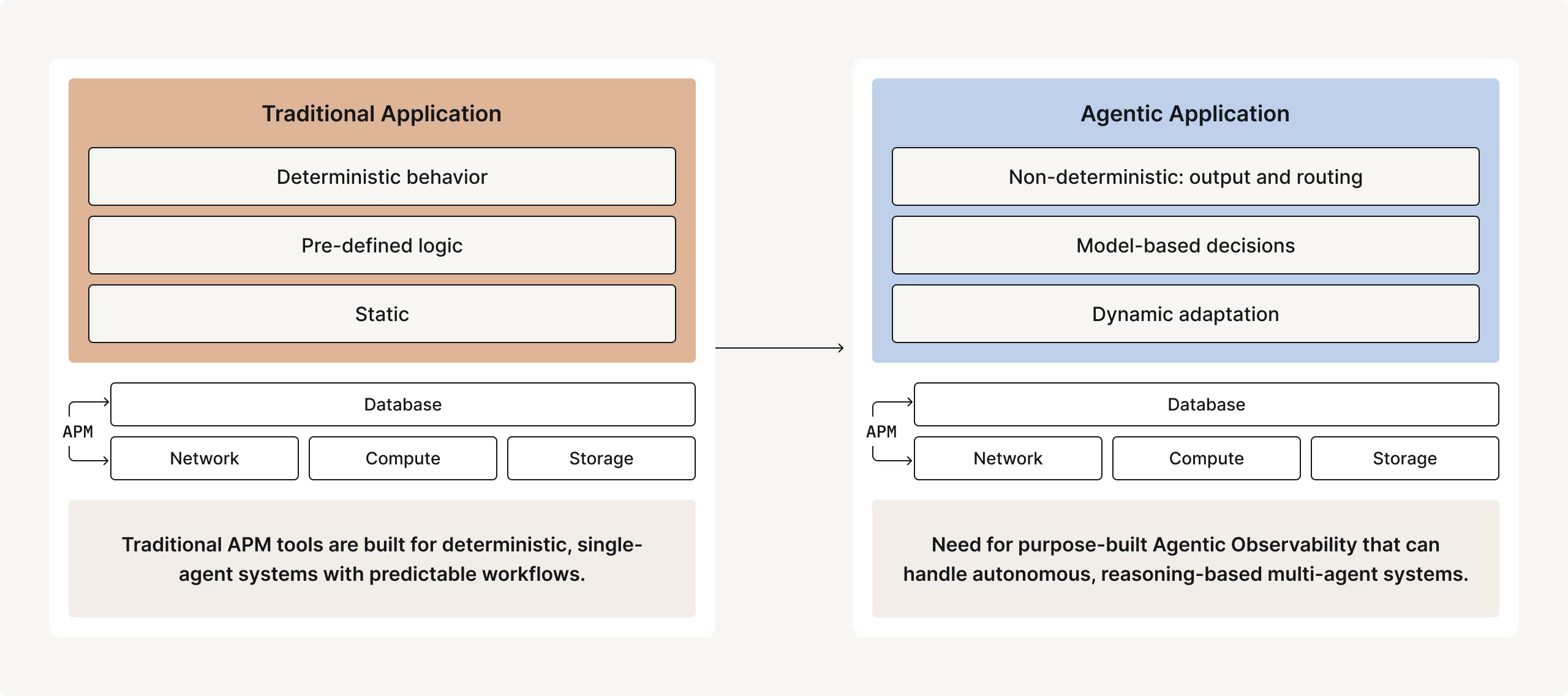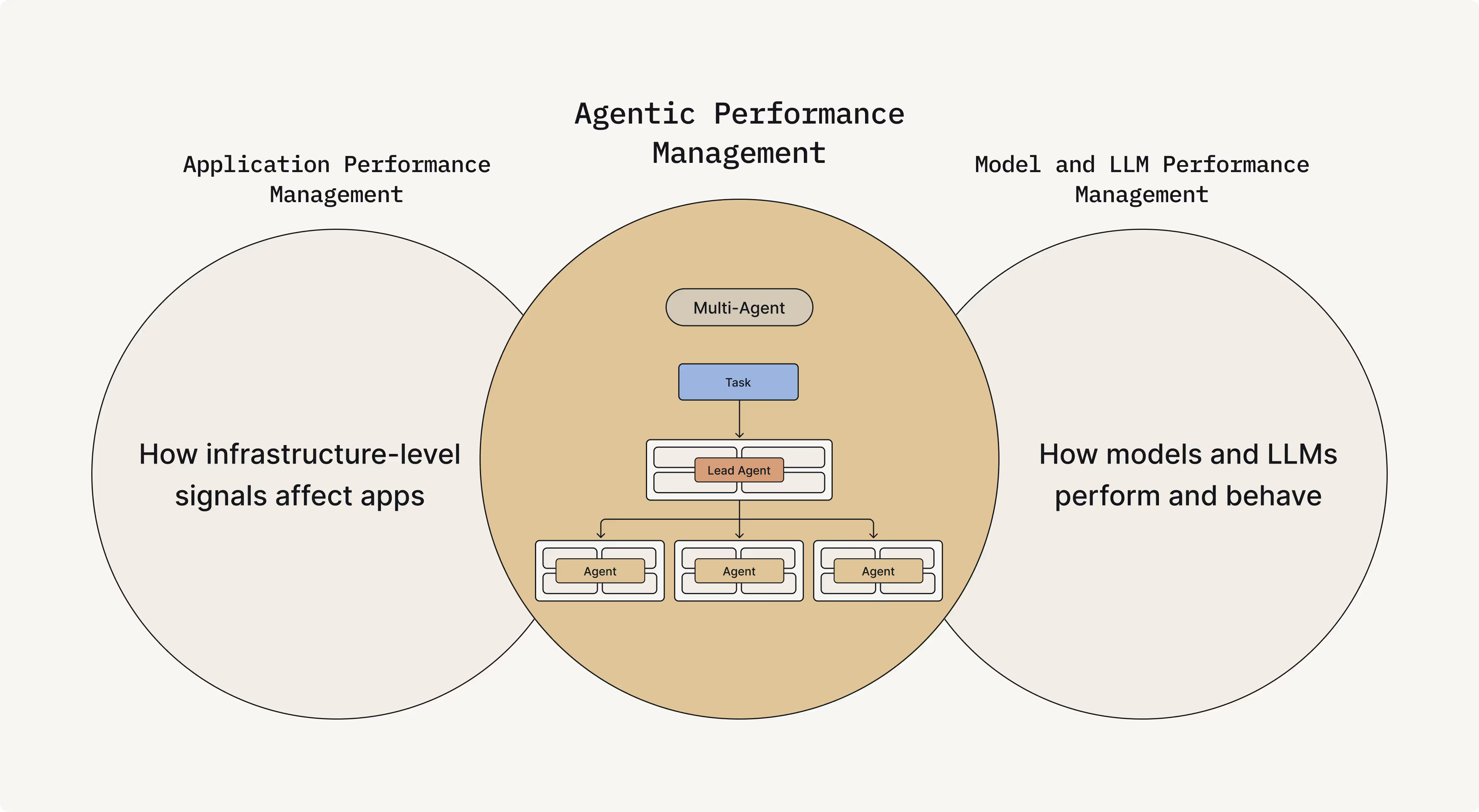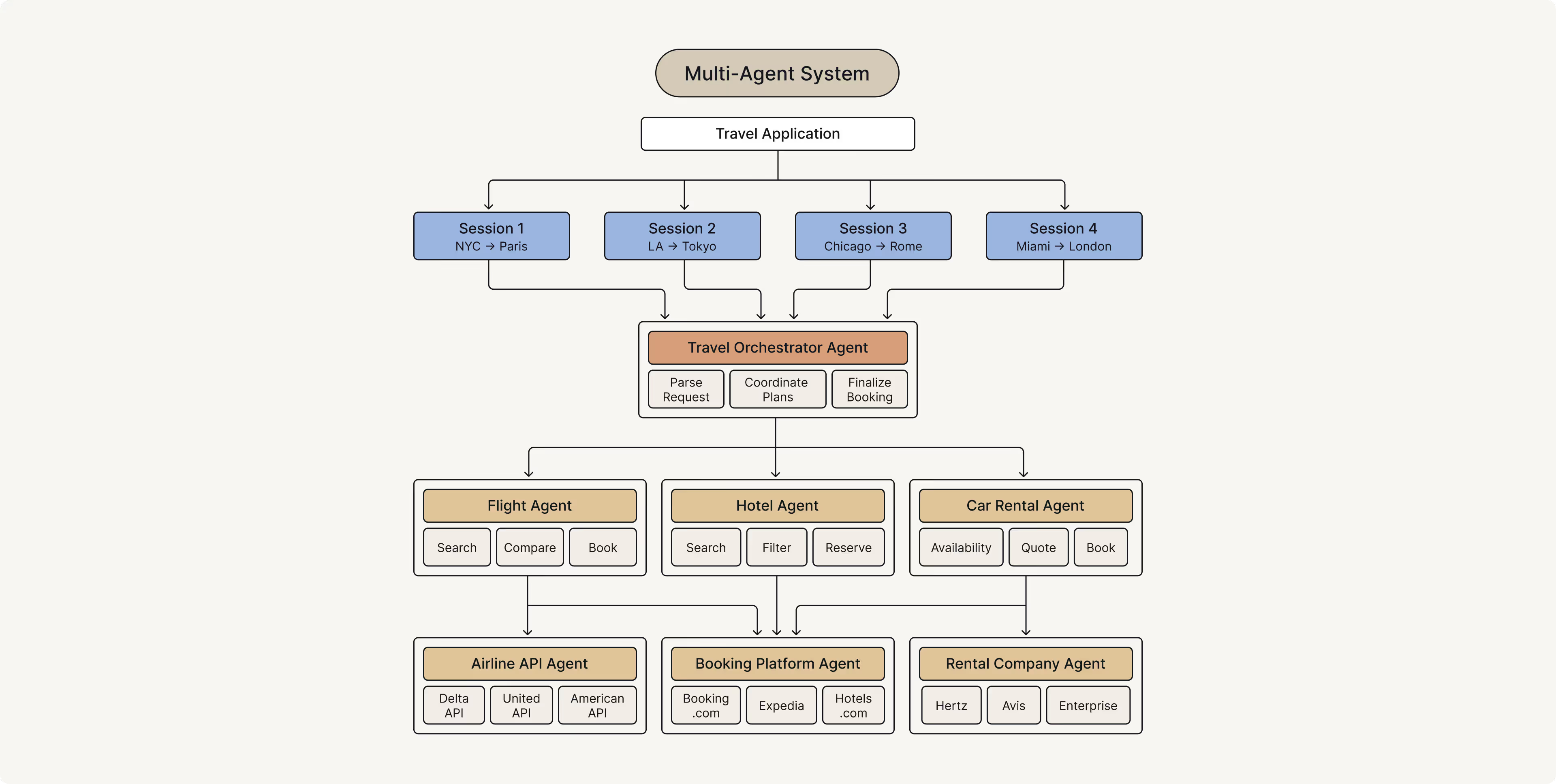It is often said that 2025 is the year of AI agents, but at Fiddler we believe the real story is the rise of multi-agent systems. Large language models (LLMs) have already transformed how we process information and automate tasks. AI agents take this further by planning, deciding, interacting with tools, and learning from experience. While most current applications rely on a single agent for specific tasks, the real opportunity is in deploying multi-agent systems that can coordinate across complex workflows.
In fact, the U.S. agentic AI market is projected to skyrocket from $1.6 billion today to nearly $59 billion by 2034. More than 90% of enterprises believe agentic AI will transform their competitive landscape within just a few years. Additionally, multi-agent systems are expected to show the highest growth rates in AI adoption.
However, adopting multi-agent systems introduces significant complexity, requiring up to 26 times the monitoring resources compared to single-agent applications. Each agent generates its own reasoning traces, tool execution logs, and decision-making paths. Monitoring these independently is hard enough, but multi-agent systems also require visibility into how these agents coordinate and influence each other. Additionally, enterprises must monitor the coordination and information flow between agents, which adds significant complexity. Traditional APM tools fall short of managing these demands, making reliability, transparency, and compliance challenging.
Why Traditional APM Tools Fall Short
For decades, enterprises have relied on traditional Application Performance Monitoring (APM) tools designed to track predictable metrics such as infrastructure performance, response times, error rates, and API calls. These tools worked well because applications behaved in deterministic, well-defined ways.
But AI agents break this framework apart. Unlike traditional software, agents autonomously plan actions, make dynamic decisions, interact with multiple tools, and reflect on their outcomes. When enterprises transition from single-agent deployments to multi-agent systems, complexity rises sharply. Each agent introduces additional decisions, interactions, tool calls, and session dependencies. Traditional APM tools cannot detect hidden issues that emerge at these layers or effectively trace the interactions between multiple agents.

Critical questions remain unanswered, such as:
- Why did the agent make a specific decision?
- Was that decision aligned with policy and compliance requirements?
- Did the agent adapt after reflecting on past actions, or did it repeat mistakes?
Can we pinpoint the root cause of an issue across multiple interacting agents?
A recent PwC AI Agent survey indicates that enterprise leaders rank security, trust, compliance, and oversight as their top concerns when deploying agentic AI at scale. Without appropriate observability tools, the risks can often translate into real-world failures, including regulatory fines, outages and reputational harm.
Agentic Observability: A New Approach to Transparent Agents
At Fiddler, we believe the solution is Agentic Observability, a new approach designed specifically for distributed, agentic applications. And it’s not just for production. Agentic Observability is just as essential during development, helping teams trace, debug, and build more performant multi-agent systems before they ever go live.
Agentic Observability merges the strengths of traditional APM, which tracks infrastructure metrics and logs, and model and LLM performance monitoring, which provides deeper insights into model predictions, data quality, and explainability. Together, these enable comprehensive monitoring of distributed, agentic applications.

Multi-agent applications generate extensive data across many layers including applications, sessions, individual agents, and their actions or tool calls. Agentic Observability provides hierarchical visibility, allowing teams to conduct root cause analyses starting from high-level application views, through individual sessions and agents, down to detailed traces and spans. This hierarchical approach delivers complete visibility into cross-agent interactions and dependencies across the system. It rolls up aggregated metrics into actionable insights, allowing enterprises to quickly diagnose issues, ensure reliability and transparency, and improve multi-agent systems.
Travel Booking Use Case
Let's explore an example that highlights why Agentic Observability matters. Consider a travel planning application powered by AI agents.
A user wants to book a trip from New York to Paris. Behind this seemingly straightforward request, multiple AI agents interact dynamically. One agent may retrieve flight schedules and pricing, another checks hotel availability, while yet another arranges car rentals. Each agent autonomously plans actions, executes tool calls to external APIs, and continuously updates its plan based on real-time data.
Imagine if an issue occurs during booking. Traditional observability tools might indicate a vague API error, but they cannot easily pinpoint where or why the breakdown happened. Did the flight-booking agent incorrectly parse flight availability data? Did the hotel agent fail to hand off information properly? Or did the rental agent use outdated input from a prior step? Worse, an error in one agent can ripple downstream through its dependencies, causing other agents to act on faulty data.

Agentic Observability provides a clear hierarchical view from the high-level user session down through each agent interaction, trace, and span. With this level of visibility, teams can quickly identify the root cause, whether it involves incorrect decisions by a single agent, failures in agent-to-agent handoffs, or policy violations. Moreover, Agentic Observability aggregates these detailed insights into high-level views and actionable metrics. This allows teams to easily track overall system health, identify patterns, and proactively address emerging issues, resulting in faster debugging, improved user experiences, and reduced operational risk.
A New Control Layer for Intelligent Agents
Agentic Observability is more than monitoring. It is a control layer where observability, trust, and alignment converge to help enterprises build AI systems that are transparent, accountable, and production-ready. By combining infrastructure telemetry, model introspection, and semantic traceability, we give teams the aggregated and granular visibility to build agentic systems that are not only smart, but also aligned, transparent, and accountable.
As multi-agent systems become the new normal, Fiddler is committed to helping enterprises build with confidence, starting from development and extending all the way into production.
Watch the Fiddler Agentic Observability video to learn more.
.png)
